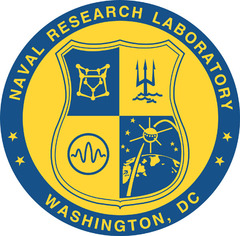Dépêches
NRL Flight-Tests Autonomous Multi-Target, Multi-User Tracking Capability
Dépèche transmise le 17 août 2011 par Business Wire

NRL Flight-Tests Autonomous Multi-Target, Multi-User Tracking Capability
WASHINGTON--(BUSINESS WIRE)--The Naval Research Laboratory (NRL) and the Space Dynamics Laboratory (SDL) through the support of the Office of Naval Research (ONR), have shown an autonomous multi-sensor motion-tracking and interrogation system that reduces the workload for analysts by automatically finding moving objects, then presenting high-resolution images of those objects with no human input.
“Not only did the network sensing demonstration achieve simultaneous real-time tracking, sensor cross cueing and inspection of multiple vehicle-sized objects, but we also showed an ability to follow smaller human-sized objects under specialized conditions.”
Intelligence, surveillance and reconnaissance (ISR) assets in the field generate vast amounts of data that can overwhelm human operators and can severely limit the ability of an analyst to generate intelligence reports in operationally relevant timeframes. This multi-user tracking capability enables the system to manage collection of imagery without continuous monitoring by a ground or airborne operator, thus requiring fewer personnel and freeing up operational assets.
“These tests display how a single imaging sensor can be used to provide imagery of multiple tracked objects,” said Dr. Brian Daniel, research physicist, NRL ISR Systems and Processing Section, “a job typically requiring multiple sensors.”
During flight tests, March 2011, multiple real-time tracks generated by a wide-area persistent surveillance sensor (WAPSS) were autonomously cross-cued to a high-resolution narrow field-of-view (NFOV) interrogation sensor via an airborne network. Both sensors were networked by the high-speed Tactical Reachback Extended Communications, TREC, data-link provided by the NRL Information Technology Division, Satellite and Wireless Technology Branch.
“The demonstration was a complete success,” noted Dr. Michael Duncan, ONR program manager. “Not only did the network sensing demonstration achieve simultaneous real-time tracking, sensor cross cueing and inspection of multiple vehicle-sized objects, but we also showed an ability to follow smaller human-sized objects under specialized conditions.”
The network sensing demonstration utilized sensors built under other ONR sponsored programs. The interrogation sensor was the precision, jitter-stabilized EyePod developed under the Fusion, Exploitation, Algorithm, and Targeting High-Altitude Reconnaissance (FEATHAR) program. EyePod is a dual-band visible-near infrared and long-wave infrared sensor mounted inside a nine-inch gimbal pod assembly designed for small UAV platforms. The mid-wave infrared nighttime WAPSS (N-WAPSS) was chosen as the wide-area sensor, and has a 16 mega-pixel, large format camera that captures single frames at four hertz (cycles per second) and has a step-stare capability with a one hertz refresh rate.
Using precision geo-projection of the N-WAPSS imagery, all moving vehicle-size objects in the FOV were tracked in real-time. The tracks were converted to geodetic coordinates and sent via an air-based network to a cue manager system. The cue manager autonomously tasked EyePod to interrogate all selected tracks for target classification and identification.
- 26/04 Norse Atlantic Airways s'envole vers Las Vegas
- 26/04 easyJet a réceptionné son 400e Airbus
- 26/04 Icelandair : résultats mars 2024
- 26/04 Air France dévoile une nouvelle campagne publicitaire
- 26/04 Volotea inaugure sa liaison entre Vérone et Bordeaux
- 26/04 Ryanair célèbre ses 25 ans à l'aéroport de Biarritz
- 24/04Ibis Styles London Heathrow : l'hôtel géré par un passionné d'aviation pour les passionnés d'aviation (photos + vidéos)
- 23/04 SkyUp renouvelle son partenariat avec Wizz Air
- 23/04 Play : résultats de mars 2024
- 23/04 Les garde-côtes japonais commande trois Airbus H225 supplémentaires
- 23/04 Vueling et Make-A-Wish France signent un partenariat
- 23/04 TUI annonce ses destinations au départ de Deauville pour l'été 2024.
- 23/04 Twin Jet renforce son programme de vols sur la ligne Toulouse/Rennes
- 23/04 Norse Atlantic Airways : résultats du mois de mars 2024
- 23/04 Volotea renforce son offre entre Lille et le Maroc
- 22/04 Finnair a dévoilé son programme de vol pour les saisons hiver 2024 et été 2025
- 22/04 Qatar Airways annonce le lancement de vols à destination de Kinshasa
- 22/04 Vietnam Airlines et CAE prolongent leur accord
- 22/04 Mermoz Academy de Tours commande des Tecnam P-Mentor
- 22/04 Transavia France reçoit son 2e Airbus A320neo







